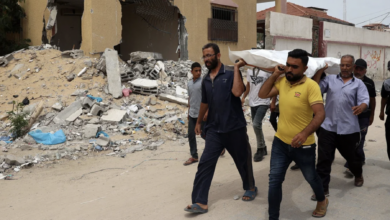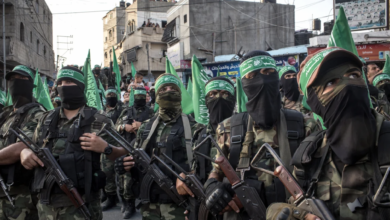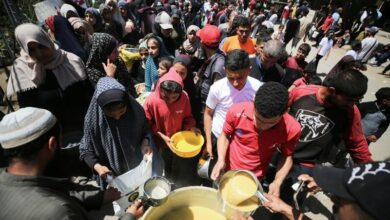A question one hears frequently among Palestinians these days is why the Islamic Resistance Movement (Hamas), a group some view with suspicion and others with sympathy, has become nearly invisible in the West Bank. Certainly Hamas has suffered a series of security blows in the last few years. Israel arrested roughly one thousand of Hamas members, included elected delegates of the Palestinian Legislative Council (PLC), following the capture of Israeli soldier Gilad Shalit in June 2006. And since Hamas took control of Gaza in June 2007 following a bloody conflict with Fatah, Palestinian security forces have carried out campaigns against the group in the West Bank. Hamas claims to have suffered 30,000 incidents of questioning, arrest, closure of organizations, or confiscation of financial assets. As of now, 600 of its members are detained in Palestinian Authority (PA) prisons and 150 of its affiliated organizations are closed.
Hamas, however, is more than simply a militant organization or a social welfare service provider. It is a broad network of members and followers, which garnered 444,000 votes in the 2006 legislative elections, with an ideological and political agenda. It has a large popular following, especially among Palestinians opposed to the Oslo agreement and disenchanted with corruption in the Palestinian Liberation Organization (PLO). So where have Hamas and its supporters in the West Bank gone?
Sources inside Hamas say that the movement has frozen its activities, in line with a 1989 strategy delineating how the movement should handle crises. Hamas followed this course in 1992, for example, when Israel exiled 416 activists from Hamas and Islamic Jihad to southern Lebanon following the kidnapping and murder of Israeli border patrol soldier Nassim Tolidano. Hamas is not ready, according to one of its leaders, to mobilize supporters behind a coherent course of action for fear of exposing them to arrest by the PA or Israel. Hamas also is reluctant to cause its followers to lose their jobs, given that 1200 of them have already been laid off from government jobs in the West Bank.
This damage control strategy is due partly to Hamas’s belief that Palestinian President Mahmoud Abbas—unlike his predecessor Yasser Arafat–would not hesitate to destroy the group if it became too much of a nuisance to him. Arafat, on the other hand, was more careful in his dealings with Hamas for two reasons: he feared being seen as an agent of the Israeli occupation if he confronted Hamas forcefully; and he used Hamas as a card to boost his negotiating position with Israel, portraying himself as the only one capable of containing the group.
Hamas has also gone to ground on the West Bank because it is convinced that the current situation will eventually redound to its benefit, especially given Abbas’s inability to begin serious peace talks with Israel. U.S. President Barack Obama’s failure to exercise pressure on Israel to stop building settlements in the West Bank has left Abbas in despair, leading him to announce that he will not run for reelection in the upcoming presidential elections.
The PA’s diminishing credibility also applies to Fatah, which has not been allowed to confront occupation forces or settlers, due to the PA’s attempt to solve disputes with Israel through negotiations rather than armed resistance. Fatah moreover is hurt by its association with the Ramallah PA, which many view as a corrupt institution. High-ranking PA officials are disproportionately well off compared with the rest of the Palestinian people, who suffer from 25 percent unemployment that leaves one of every three families in poverty.
It is difficult to ascertain whether Hamas members are taking part in confrontations with the Israelis, given the secretive nature of the organization. It is clear, however, that Palestinians do not currently expect Hamas to mount demonstrations and such, although they long for the suicide attacks that many view as the most effective way to fight a much more powerful enemy.
In this regard, Hamas seems confident that justifying its absence in terms of repression by Israel and the PA will resonate at the popular level. In fact, popular opinion polls have shown an increase in Hamas’ popularity in the West Bank versus a decrease in Gaza. West Bank Palestinians view Hamas as symbol of resistance to Israeli and U.S. domination, whereas Gazans –who have had a chance to test governance by Hamas –see its performance as similar to, if not worse than, that of the corrupt PA leadership.
Finally, Hamas believes–as it rides out the storm—that it can use several possible future scenarios to its advantage:
* If the PA is dissolved, Hamas will be in a position to present itself as an alternative to the PLO, thereby vindicating its refusal to engage in peace negotiations.
* If Abbas holds general elections in January 2009 as announced, Hamas can boycott and question the legitimacy of the elections, especially if half of the Palestinian electorate (in Gaza) does not participate.
* If elections instead are held in June 2010 (as specified in the reconciliation agreement drafted by Egypt), Hamas would have enough time to broker an agreement with Israel whereby it would release Shalit in exchange for 450 Palestinian prisoners. Such a deal would bolster Hamas’s electoral chances and increase its legitimacy as a leader of the Palestinian resistance.
* If elections are not held at all, Hamas can use the continued deterioration of the situation to question Abbas’s legitimacy. Hamas can argue that, by contrast, its elected members of the PLC continue to enjoy legitimacy. The Palestinian Basic Law stipulates that the term of the PLC does end until new members are sworn in, whereas the president of the PA is subject to a four-year term limit.
Omran Risheq is a Palestinian writer and analyst.
This article is reproduced in agreement with the Arab Reform Bulletin.




